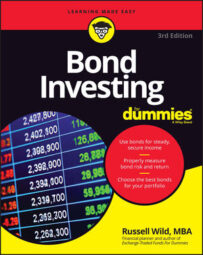Stocks can generate returns in two ways: They can appreciate in value and they can pay dividends. Historically, dividends have actually accounted for the lion’s share of stock returns. Not long ago, however, dividends fell out of favor, reduced to a pittance throughout the 1980s and 1990s.
But in the past few years, they’ve come raging back into vogue. Who can say why? At present, the dividend yield of an average basket of U.S. stocks, per Morningstar, is now about 1.75 percent — nearly, but not quite as much, as you would get on a 10-year Treasury bond.
Stock dividends, by definition, are not fixed in stone, as are interest payments on bonds. However, they can, within a diversified portfolio of stocks, deliver a fairly consistent cash flow. And unlike bond interest, which is generally taxed as income, the majority of stock dividends receive special tax treatment. At least under current laws, taxes would rarely be higher than 15 percent.
Not all stocks are equally likely to cough up dividends. If you wish, you can add stocks to your portfolio that will do just that. You can grab your dividends with either individual stocks or with any number of mutual funds or exchange-traded funds that offer high-dividend paying stocks.
Your yearly dividend yield can increase to more than 2 percent with relative ease if you choose your stocks selectively or pick up either a high-dividend stock mutual fund or exchange-traded fund. Investors who usually jump on board new investing trends have been quick to do just that lately. The reasons? Low yields on bonds and good performance on dividend stocks.
But high-dividend stocks won’t see high performance every year, or even every decade. High-dividend-paying companies, often categorized as value companies (precisely because they pay out higher dividends), tend to invest less in their own growth.
Companies that are more miserly with dividends (often called growth companies) tend to shovel more into R&D and such. Sometimes that “R&D and such” translates into new products, growth, and greater profits that result in gangbuster stock performance. (Think of the entire 1990s; growth stocks were definitely the place to be.)
There’s certainly nothing wrong with dividends, per se, but by focusing on them you may be giving up on absolute return. The best stock portfolios are well diversified: They have both value and growth stocks. You wouldn’t want to have a stock portfolio of all high-dividend companies, even though the cash flow would be sweet.
Nor would you want to have a portfolio too concentrated in a handful of industry sectors. As fate would have it, most high-dividend-paying stocks tend to fall heavily in certain industry sectors, such as utilities, tobacco, pharmaceuticals, and banks.
Gear your portfolio too heavily toward high dividends, and you’ll be pretty much locking yourself outside of semiconductors, medical equipment, Internet technology, biotechnology, and other sectors that may well turn out to be the superstars of the next decade.
Compared to bonds: The cash flow from interest on bonds is greater and more predictable than the cash flow from stock dividends. Over the long haul, however, expect the total return on stocks (which includes both dividends and price appreciation) to be higher.
Stocks are also much more volatile than bonds. Whereas bond interest is typically issued semiannually and bond funds usually pay interest monthly, stock dividends are more commonly posted quarterly, although stock funds may issue dividends quarterly, semiannually, or annually.

